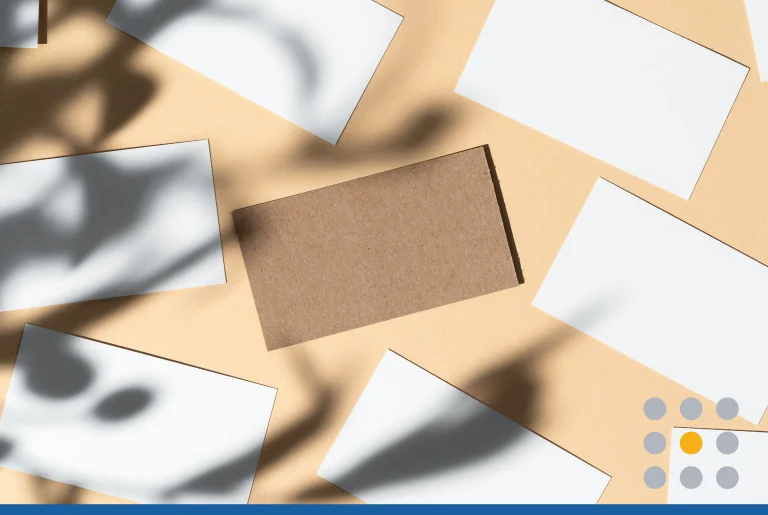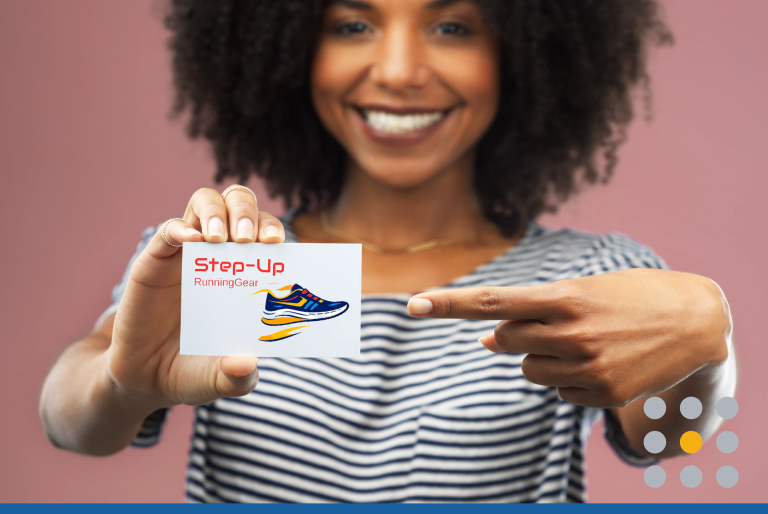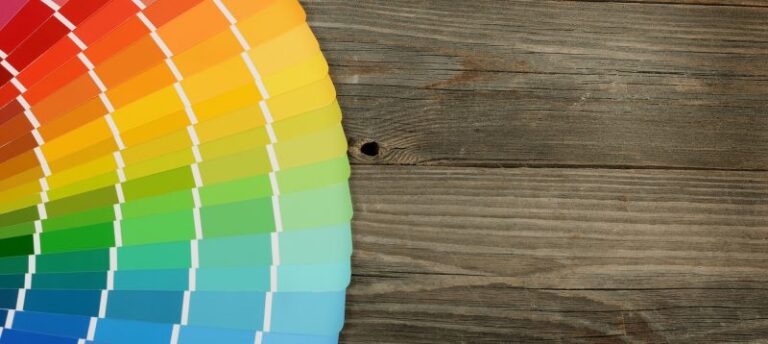Are your advertisements reaching enough people? Custom banners have the potential to put your message in front of a lot of new customers and quickly grow your audience.
Once you grab attention, the real challenge is finding the right words and visuals to keep people interested. The impact of your message depends on the quality of your banner design. An effective banner is eye-catching, goal-driven, and easy to read, helping you connect with people who haven’t heard of your business before.
When done well, custom banners create a window of opportunity to show potential customers how you can help them. If you want to get people excited to learn more about your brand, follow our pro tips to design a personalized banner that attracts new business.
1. Set a Marketing Goal
Know what you want to accomplish before you touch any design tools. Everything from the size of the banner to the layout depends on the message you want to convey. Put off this step until later, and you may end up backtracking and spending more money than you need to.
Think about the action you want customers to take. Are you offering a general description of services to promote a new business? Do you want customers to call or book an online consultation? Are you promoting a specific event or sale? Are you highlighting a key product claim?
Make a brief outline of the major details you want to put on your personalized banner. In most cases, this will include basic information about your brand, a marketing claim, and a call to action. You will whittle down these details later, but it helps to have a strong starting point.
2. Decide on Banner Placement
Where do you intend to place your banner? Plan to invest in more durable materials and professional printing for outdoor signs. Vinyl banners are made to survive a variety of weather conditions, and you won’t have to worry about your sign fading in direct sunlight. It’s also a good idea to buy higher-quality banners if you frequently transport them to trade shows.
The context in which you’re using the banner matters as well. For example, if the banner is right outside your store, there’s no need to include a business address. You can conserve that extra space for information that’s more useful.
3. Write Engaging, Optimized Copy
A jumbled banner is hard on the eyes, so aim to keep your copy as minimal as possible. Reflect on your marketing goal, and try to think of the simplest way to phrase your primary headline.
What is the most critical detail you want people to remember when they pass by your sign? What is your call to action? On a general descriptive banner, the headline could be your business name. If you’re advertising a product or deal, the banner should stress the most compelling feature on offer.
After every draft, scan for words you can remove without changing the clarity of your copy. Have other employees or friends read the copy as well to make sure the message comes across the way you intended.
4. Explore Size and Format Options
Choose a banner style and format that’s best suited to your environment. Here are common factors to consider:
- Setup: Do you plan to hang the banner, anchor it on the ground, or fly it on a pole? Hanging or flag banners are usually raised well above the ground and need highly readable fonts for strong visibility. On the other hand, banner stands are often at eye level in environments where people can stop and read it.
- Size: Keeping location in mind, consider how far away the average person will be when reading your sign. Common sizes range from 2’x4′ to 5’x30′. However, most printing companies allow you to choose custom dimensions for personalized banners, as long as they fall within an acceptable range.
- Orientation: Will you display the text vertically or horizontally? For most people, reading left to right is easier on the eyes. If you’re arranging the copy in any other way, you should use fewer words and leave more space between each line of text for added clarity.
Look around your hometown for research. Compare the differences between the banners that stand out and the ones you find less appealing. You can use what you learn to refine your design.
5. Choose Your Fonts Wisely
Terrible typography will always ruin great copy, so be careful which fonts you choose. Your primary message will be the largest text, and it’s important to go with a font that has bold, heavy lines you can comfortably read from far away.
Sans serif fonts often work best on banners because the letters have a clean, minimal look. Do you plan to display the headline in sentence case or all caps? With the latter option, you should add light spacing between the letters, so the words don’t look muddled from a distance.
Most of the time, it’s beneficial to use the same or similar fonts across all your marketing channels for brand consistency. But if you have a specialty font in your wordmark and it isn’t very legible from a distance, choose an alternate font that matches the tone of your branding. If your business name or wordmark isn’t the headline, you can be more flexible about using scripts and stylized fonts.
6. Use the Right Image Files
Do you plan to use graphics on your vinyl banner? Choose high-quality images in the largest file sizes you have available. When you resize the graphics for your banner, you don’t want any pixelation or odd discoloration to show up in the final print.
You can avoid most image errors by working with vector files. They can be resized up or down without distortion, and printing companies can deliver better results if your original image is top-notch.
7. Balance Color and Images
Don’t overpower the eyes with excessive imagery. If your banner has detailed color graphics, such as menu items, it’s a good idea to stick with a white or neutral background. Another option is to use semi-transparent images on a colored background, which keeps the focus on the text.
However, images aren’t necessary for most custom banners, and they can increase the overall cost. If you’re working with a tight budget, focus on using color to boost visibility and brand recognition.
Let your brand colors guide the design, but always strive to put space between bright, saturated colors. Many design programs have premade banner layouts that include a two-color or three-color background. One way to create contrast is to use a neutral color behind the text and your main brand colors as accents.
The most important thing is to make your text look crisp and legible. Bright white fonts work well on most dark or saturated backgrounds, while dark fonts stand out against paler backgrounds.
8. Perfect the Details
Fine-tune your layout by creating one focal point and organizing the rest of the content around it. You only have a few seconds to convert a passerby into an interested customer. The goal is to control the order in which a reader processes the information.
For each line of text, reduce the font size based on the importance of the information. In most cases, the subheading will be roughly half the size of the headline. Any tertiary details should be smaller than the subheading.
Get as much feedback as you can before finalizing your custom banner design. Other people can offer valuable insight on how well the sign motivates them to act.
Lastly, make sure you love the design before it goes to print. A customer banner is a representation of the business you worked hard to build, and you should feel proud to put it on display.







